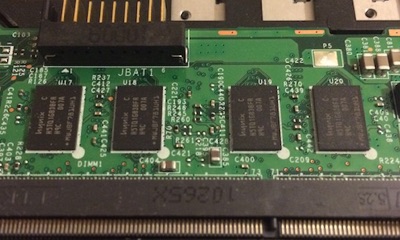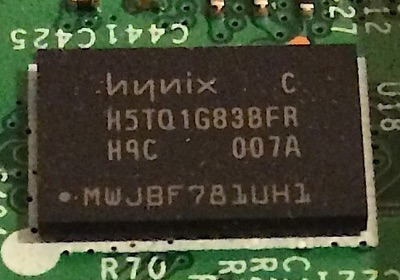I own an inexpensive netbook that I take with me when I travel. Specifically, an MSI Wind U135. It’s been serving me well for almost 5 years, and the other day I decided to upgrade it a bit, by adding some memory.
After some online research, it was clear I could only upgrade from the builtin 1GB to a total of 2GB, adding a 1GB memory module. What was not so clear though is what specific model of memory I needed. This netbook uses DDR3 SDRAM, but it’s not as easy as just buying that:
- Within the DDR3 SDRAM specification there are 6 different sub-specs operating at different frequencies.
- For each frequency, there are a further 2-4 modes of operation.
- In total, there appears to be 21 different types of DDR3 SDRAM.
- Online resources warn that the computer will not work with the incorrect type of memory.
- There’s no indication anywhere of what specific type of memory my netbook uses.
On the BIOS setup menu, it lists the “System Bus Speed” as 667MHz. The tool
dmidecode confirms this, but doesn’t add anything to it1:
1$ sudo dmidecode --type memory 2# dmidecode 2.12 3SMBIOS 2.6 present. 4 5Handle 0x0029, DMI type 16, 15 bytes 6Physical Memory Array 7 Location: System Board Or Motherboard 8 Use: System Memory 9 Error Correction Type: None 10 Maximum Capacity: 4 GB 11 Error Information Handle: Not Provided 12 Number Of Devices: 2 13 14Handle 0x002B, DMI type 17, 28 bytes 15Memory Device 16 Array Handle: 0x0029 17 Error Information Handle: Not Provided 18 Total Width: 64 bits 19 Data Width: 64 bits 20 Size: 1024 MB 21 Form Factor: DIMM 22 Set: None 23 Locator: A1_DIMM0 24 Bank Locator: A1_BANK0 25 Type: <OUT OF SPEC> 26 Type Detail: Synchronous 27 Speed: 667 MHz 28 Manufacturer: A1_Manufacturer0 29 Serial Number: A1_SerNum0 30 Asset Tag: A1_AssetTagNum0 31 Part Number: Array1_PartNumber0 32 Rank: Unknown
This would narrow down the search to one of the following models listed on Wikipedia (only relevant extract of the table shown):
| Standard name | I/O bus clock | Module name | Timings |
|---|---|---|---|
|
DDR3-1333F DDR3-1333G DDR3-1333H DDR3-1333J |
666.67 MHz | PC3-10600 |
7-7-7 8-8-8 9-9-9 10-10-10 |
At this point, I had no idea of whether any of the listed 4 types was ok or I should find out which exact one I needed. I know next to nothing about hardware, and I wasn’t going to risk it. I needed more information.
I opened up the netbook and looked inside. The builtin memory module is easy to find: four black rectangles lined up in front of the empty upgrade slot:

The memory module, built into the motherboard
Each one of the black rectangles has an inscription with details about the manufacturer, as well as the part model and number. It’s tiny and difficult to read. A picture can help to make out the text. In my case, they look like this:

A single memory chip, inscribed with model parts and numbers
That’s a mouthful, but it makes for a starting point. I decided to look up “H5TQ1G83BFR” first. I got a few links as a result, but the one that was most interesting was a PDF with technical details of the products offered by the manufacturer. The first page lists three product lines, one of which is “H5TQ1G83BFR-xxC”, where the “xxC” part would match up the inscription “H9C” on my chips. Promising!
As mentioned, I know nothing about this topic, so the document could be in Klingon for all I can understand. Thankfully, I just needed part numbers. Since the document seems to cover the “xxC” lines, and I own an “H9C”, I looked up “H9”, and found exactly what I wanted (again, an extract for the relevant table):
| Speed Grade (Marking) | Remark (CL-tRCD-tRP) |
|---|---|
| -G7 | DDR3-1066 7-7-7 |
| -H9 | DDR3-1333 9-9-9 |
According to this, my netbook uses DDR3-1333 9-9-9 which in turn, according to Wikipedia, means the exact spec is DDR3-1333H. With that information (and remembering I was limited to buying 1GB of memory), I could finally go online shopping with enough confidence that I was getting the right product.
-
Info on using
dmidecodeat HowtoForge. ↩